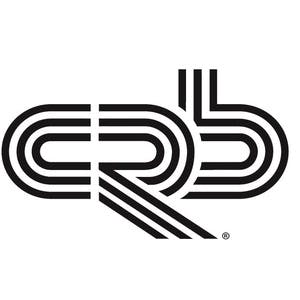How Long Will it Take to Get a COVID-19 Vaccine to Market?
Vaccines and therapies can’t come soon enough for a world facing an unprecedented threat from COVID-19.
by Christa Myers, Process Engineer
Fortunately, the pharmaceutical industry has long been accustomed to a speed-to-market mentality. While developing new vaccines and treatments is a long road, the industry is pursuing every avenue to accelerate production. Collaboration is the solution to rapid deployment to take any new product from research and development through scale-up, into a commercial product.
Getting a product to market is usually about protecting the health and lives of a specific small pool of people that have a chronic condition. The COVID-19 pandemic is different. The product must protect a much larger pool of people from a severe but acute illness that is highly infectious. This novel coronavirus has changed the way we think about therapeutic products as well as vaccines.
Why can’t they get a vaccine out now? My family and friends have asked this question. It can be hard to understand why, when a vaccine is so desperately needed, it takes so long to become available. Even in times of great need, vaccines must be proven as effective and safe. Fortunately, many promising options have already entered clinical trials. But the next hurdle to clear is producing enough vaccine to meet the global demand. Ideally, everyone will get this vaccine to safeguard from further spread or a resurgence of COVID-19. That would mean that we need the capacity to produce billions of doses and billions of doses requires a lot of infrastructure to make and ship. What does it take to manufacture a new vaccine at commercial scale? Once we’ve identified a potential vaccine, it takes time to verify the vaccine’s safety and efficacy through clinical trials. Clinical trials not only monitor the effectiveness of the product but also document possible side effects and noted drug interactions. Once clinical trials show that the product is effective, producing a large amount of it in a safe manner can take approximately four years. That timeline includes designing, building, qualifying and licensing a manufacturing facility, and then producing adequate amounts of the vaccine to get to market. The production process needs to be validated to ensure that the vaccine is consistent, safe and effective. Manufacturing facilities have to prove that the process and product are right not just the first time, but every time. There must be controls and measures in place to verify that the vaccine fluid itself is formulated consistently and correctly, and also that the vials or syringes contain the correct dose, does not pose any hazard to the patient, is labeled correctly, and packaged appropriately for the use, and are stable. How do we accelerate the vaccine production timeline? All these steps, though time-consuming, are essential to the vaccine production process. However, this timeline can be shortened in several ways.- Use existing manufacturing space
Mobilizing a facility already at work on other types of vaccines sounds easy, but vaccines and treatments are made many different ways. The first challenge is finding a facility with the right equipment to produce the new product. The second challenge is that an older facility might be outdated. As manufacturing processes have changed, better process equipment has been engineered to improve ease cleaning, which affects facility throughput. Additionally, it can be difficult to ask an existing facility to change overnight. A facility chosen to manufacture a COVID-19 vaccine might have to halt its current work and likely bring in new equipment. Procuring that new equipment comes with a potentially long wait. A close evaluation of equipment and facilities must be performed to assess what new equipment may need to be purchased and if there are any regulatory issues that must be addressed.
- Partner
Many companies are test fitting how the research that they are conducting matches with existing facilities of partner companies. In these days of fast track products, utilizing every element available to you to get the product to market matters. A clear review of the utilities, capabilities, and capacity of these facilities is needed to allow for a faster and low-risk implementation. We often work with our clients to provide risk assessments in order to develop fully an understanding of requirements and risk points in order to best fit a process into a facility. Partnering is usually a short-term approach that allows for a “greenfield” new construction effort to take place.
- Use a contract development manufacturing organization (CDMO)
CDMOs develop the process for and manufacture other companies’ products. These organizations provide manufacturing space that is specially fit-out to process specific unit operations in a multi-product manner. Many are focused on one aspect of manufacturing; one may only provide the ability to make bulk product while another focuses primarily on filling the bulk drug substance into vials/syringes or making tablets, capsules. This allows a research organization to focus on product development and let highly trained personnel in a well-suited facility take care of the manufacturing. Relying on CDMOS to provide manufacturing experience and reliability reduces risk to the safety, efficacy, and availability of the drug product.
- Scale out
Given all the constraints on new construction and retrofitting existing facilities, a scale-out approach may offer a quicker path to a viable and widely distributed COVID-19 vaccine than a scale-up. Scaling out means producing multiple smaller batches instead of larger batches using smaller equipment. Leveraging engineering and equipment design from one unit to the next, this allows for an appropriately scaled deployment of the vaccine, while freeing up units to be used for other products when not producing the vaccine. That’s important because few facilities produce one single product – particularly for a condition that is seasonal like the flu or COVID-19. The evaluations for the cost benefits of a scale-out approach consider many scenarios to find the best scale for overall long-term operations.

